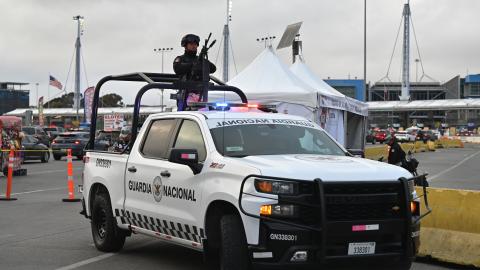The selection of Rep. Paul Ryan of Wisconsin as the Republican vice presidential nominee continues an odd and indeed unprecedented pattern so far in the 21st century. Seven of the eight major party vice presidential candidates have been the first people from their home states to be major party national candidates.
This started with Dick Cheney of Wyoming and Joseph Lieberman of Connecticut in 2000. It continued in 2008 with Joseph Biden of Delaware and Sarah Palin of Alaska. Now we have Ryan.
The only exception has been John Edwards of North Carolina in 2004. He was the second national candidate from the Tar Heel State. (The first was William A. Graham, running with Gen. Winfield Scott on the Whig Party's last national ticket. He didn't win, either.)
This is very different from our past practice. From the end of World War II to the end of the millennium, there have been only three first-from-the-state nominees on national tickets: George McGovern in 1972, Hubert Humphrey in 1968, and Barry Goldwater in 1964. Going back further, between the end of the Civil War and the Cross of Gold, the Democrats ran a New Yorker for president in every election but one, usually paired with someone from a border state--as close as they could get to the South. It only worked for Grover Cleveland. Meanwhile, from 1860 to 1924, every Republican ticket had a candidate from Ohio, Illinois, or Indiana. That nearly always did work.
The recent run of firsts leaves 14 states, and the District of Columbia, that have never had a major party nominee. Most of them are small, though none is as small as Wyoming, and most are in the West. But there are exceptions. Florida has more electoral votes by itself than either party's full ticket. But Florida was the smallest Southern state from its admission to the Union in 1845 until the election of 1952, and on top of that after 1860 neither party put a Southerner on its ticket until 1928.
For that matter, Wisconsin has been a state almost as long as Florida, it never seceded, and it had more electoral votes than Florida until 1964. Still, Ryan is its first nominee. It has, however, had a pair of third-party candidates, most notably "Fighting Bob" La Follette, the Progressive Party's presidential nominee in 1924. He won 17 percent of the national vote, and his home state's 13 electoral votes.
La Follette may have inadvertently closed the door on the other Wisconsin senator in 1920, according to the contemporary popular historian, and well-connected Republican, Mark Sullivan. Harding and his managers wanted Sen. Irvine Lenroot for his running mate as political balance, a progressive to go with Harding's conservatism. But the delegates would not have somebody from Wisconsin. La Follette and his supporters were highly unpopular among other Republicans not only politically but personally for their self-proclaimed moral superiority.
This break with past practice is something more than a curiosity. Ryan may make a difference in Wisconsin; he's been solidly successful in a traditional swing district and he may carry that over to the entire state. But Bush and McCain didn't pick their running mates to ensure they would nail down the three electoral votes of Wyoming or Alaska, and Gore and Obama could be pretty sure to carry Connecticut and Delaware, respectively, regardless of their running mates. What Cheney and Lieberman brought to their tickets was respect and a broad consensus that if necessary they could be effective presidents. Ryan may be in the same category; he's also respected, he's hard working, and he's personable. They all were and are nationally known, regardless of the size of their home state.
Whatever happens in November, we are in a new era. There are probably 28 senators and 14 governors, and maybe a mayor, thinking, "why not me, next time?"

















